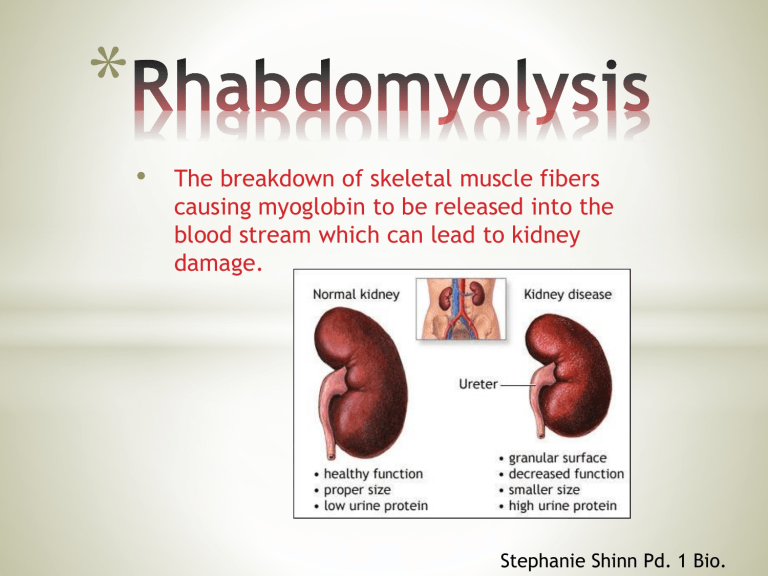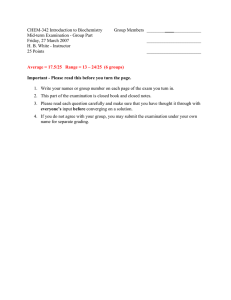Rhabdomyolysis

*
•
The breakdown of skeletal muscle fibers causing myoglobin to be released into the blood stream which can lead to kidney damage.
Stephanie Shinn Pd. 1 Bio.
*
* A protein found in Cardiac and Skeletal muscles.
* During exercise, it provides extra oxygen to the muscle to sustain activity.
*
When damage occurs, it goes into the bloodstream .
* Kidneys are responsible for the removal of
Myoglobin, and when there’s too much, it can severely damage them and induce disorders such as
Rhabdomyolyis .
*
*
Traumatic
• Electrical Injury
•
Burns
• Heatstroke
•
Crush Injuries
*
Non-traumatic
• Excessive Exercise
•
Some Medications (Statins)
• Infections
• Other Medical Or Genetic Disorders
*
* Abnormal Urine Color (Dark, red, cola colored).
*
Decreased Urine Production
* General Weakness
*
Muscle Stiffness
* Muscle Tenderness
*
Weakness of Affected Muscle
* Unintentional Weight Gain
*
Joint Pain
* Seizures
*
Swelling (Hands & Feet)
* Trouble Breathing
*
Abnormal Heartbeat
* Unexplained Bleeding
*
*
Anyone can get Rhabdomyolyis!
*
Risk Increasers :
• Alcoholism.
• Drug Use (Cocaine, Amphetamines, Heroin, PCP).
• Severe Exertion (Marathon Running, Calisthenics, etc).
*
*
Consume fluids containing bicarbonate .
• Through IV if necessary.
• Prevents kidney damage.
• Flushes out myoglobin.
*
Possible Kidney Dialysis .
*
Prescribed Diuretics or Bicarbonates .
*
*
Rhabdomyolysis is dangerous , and even fatal at its worst.
* Always drink plenty of fluids after strenuous exercise or any activity that may have damaged the skeletal muscle to prevent myoglobin from entering the bloodstream and affecting your kidneys!
*
*
PubMed Health
*
AANEM – Rhabdomyolysis
*
Medline Plus
*
PudMed Health – Myoglobin
*
Krames Patient Education











